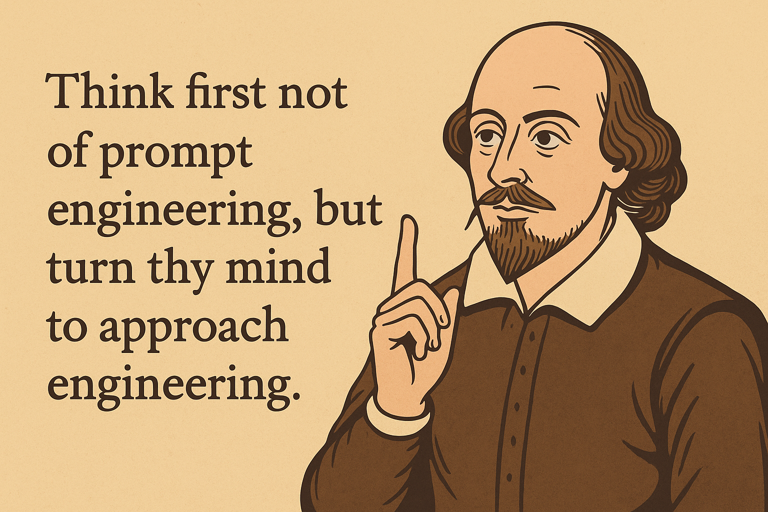By Dr Aruna Dayanatha PhD

Introduction As AI tools like ChatGPT, Claude, and Gemini become indispensable in professional settings, a critical debate emerges: Is prompt engineering the most important skill, or is it the user’s problem-solving approach that determines the outcome? In this article, we stage a debate between these two perspectives to examine what truly drives success when working with conversational AI.
Argument 1: Prompt Engineering is the Key
Presented by: The Prompt Purist
- AI Doesn’t Read Minds—Only Prompts
AI systems are trained to interpret text, not human intentions. No matter how brilliant your approach is, if it’s not conveyed in a clear, structured prompt, the AI will generate subpar responses. - Language is the Interface
Like code in software development, prompts are the programming language of LLMs. Better prompts yield better outputs. There’s a reason why entire fields and libraries of prompts have emerged—they consistently improve outcomes. - Templates Work Across Domains
From legal cases to business strategy, prompt templates (“act as a…” or “use SWOT…”) are reusable and adaptable. This proves that robust prompting frameworks can outperform individualistic thinking. - LLMs Can Simulate Strategy
Few-shot prompting and chain-of-thought formats allow the AI to generate approaches itself. A good prompt can even simulate the user’s reasoning path, minimizing the need for complex upfront strategy.
Argument 2: The User’s Problem-Solving Approach is Fundamental
Presented by: The Strategic Thinker
- AI is Amplification, Not Origination
AI doesn’t think—it reflects. It amplifies whatever structure the user brings to it. Without a clear purpose or analytical lens, even the best prompt produces noise. - Contextual Thinking Shapes Interaction
Approaching a legal issue as a client versus a lawyer yields different lines of inquiry. The user’s conceptual frame defines the type of insights they extract, even if the words in the prompt are similar. - Prompting Without Purpose Is Shallow
Many novice users copy templates but fail to derive meaningful value because they lack a method or model to solve their specific problem. Structure beats syntax. - Experts Engineer Their Own Approach
Real AI power users don’t just prompt—they design inquiry systems. They break problems into subtasks, test assumptions, and triangulate answers. This is approach engineering, not prompt tweaking.
Synthesis: Toward Integrated Thinking
The truth likely lies in integration. Prompt engineering is the toolbox, but the user’s problem-solving approach is the architectural blueprint. One without the other leads to underutilized potential or incoherent output.
In complex domains—legal, medical, academic, consulting—approach defines the scope, and prompts carry the execution. In simpler cases, prompt templates suffice. But as AI grows more powerful, the ability to engineer your way through a problem becomes the key differentiator.
Conclusion: Shift from Prompt Engineers to Thought Engineers
The future belongs not just to those who can craft clever prompts, but to those who can shape strategic conversations with AI. It’s time to train ourselves and our teams to become not just prompt engineers—but thought engineers who design intelligent inquiry.
Do you agree? Share your thoughts or approaches to working with AI.
